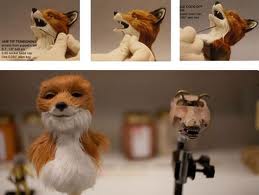A technique where live actors are used as a kind of living stop motion puppet.The great thing is you don't need to be able to draw or make puppets but you do need to use a bit more imagination to make it work well and go beyond the usual.
Probably the most common type of style associated with stop-motion. The puppets have either wire or ball and socket armatures inside them to allow them to hold their pose.
Claymation
Character's are made of a malleable substance, usually plasticine clay. It can be difficult to keep your shape constant throughout the shot, but it does allow you to do some pretty extreme expressions
Will Vinton "The adventures of Mark Twain"
Replacement
Pioneered by George Pal, who would pretty much build different puppet in a different pose for each part of the movement and then replace them for each frame. It's more common to just use replacements on heads or mouth shapes, not the whole puppet.
Found Object
Often used alongside "pixilation". Jan Svankmajer used this technique to good effect in "dimensions of dialogue" and more recently "Pes" uses it in his films.
Pes "The Deep"
Cut out
Characters are made from paper or card and animated flat on a table with the camera looking straight down from above. It's not used commercially any due to computer software such as "Cel action" being able to imitate it easily and more efficiently.
Monty Python
Multiplane
A form of cut out where several layers glass are used to create different levels to animate on
Strata Cut
Bit of a mind bender this one - you basically build a long bread-like "loaf" of clay, pre- loaded with your varying imagery. You then then slice the loaf into thin sheets and take a frame for each cut.




No comments:
Post a Comment